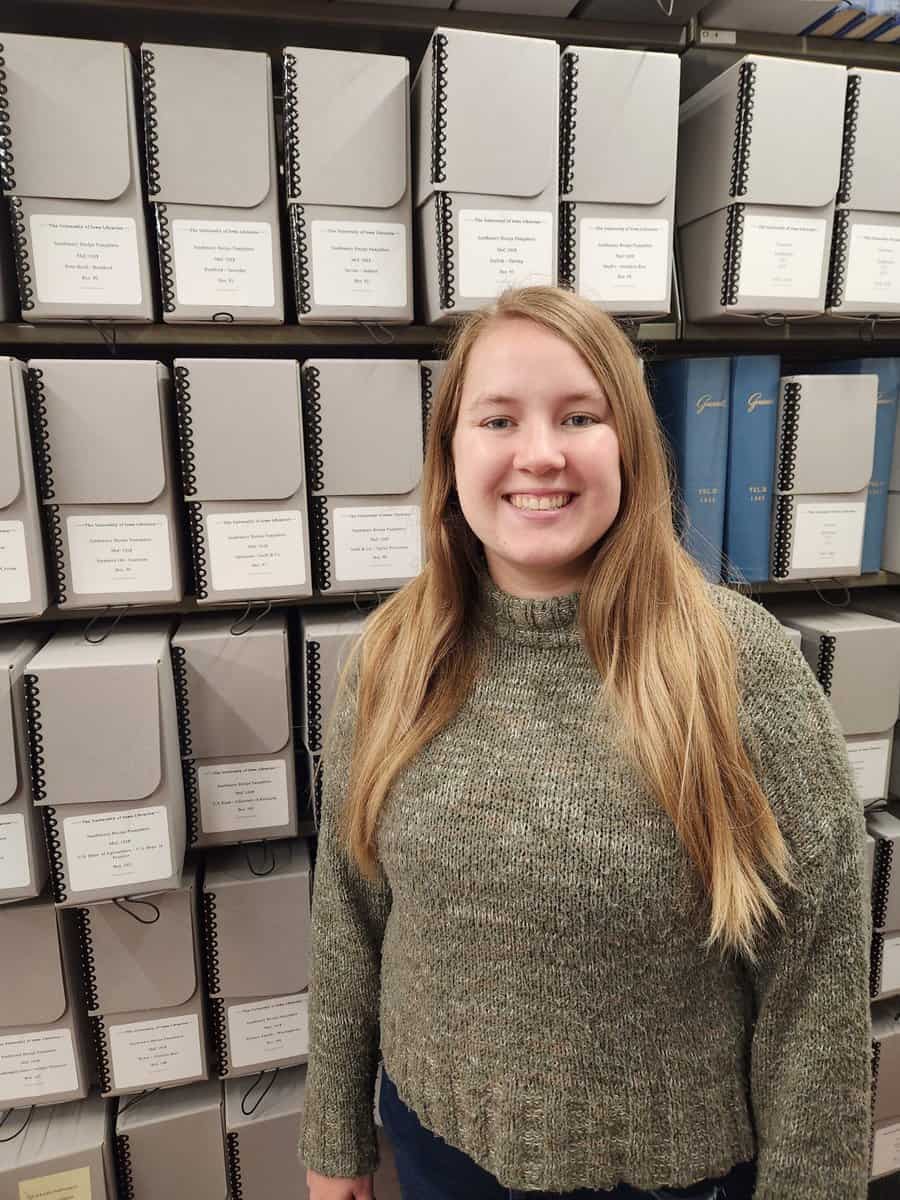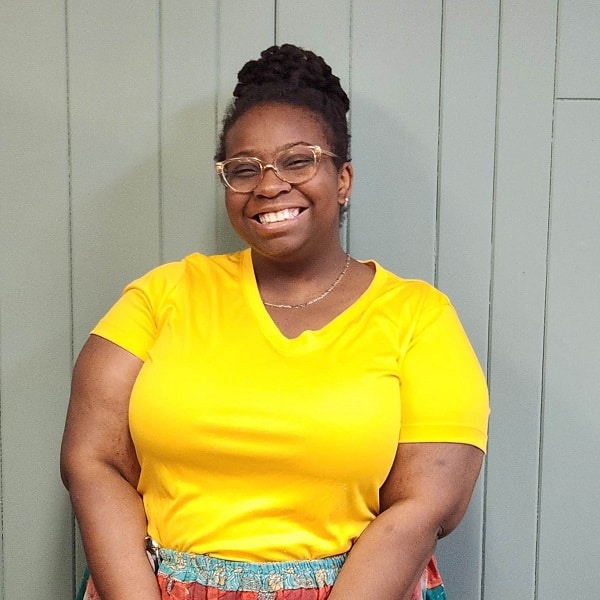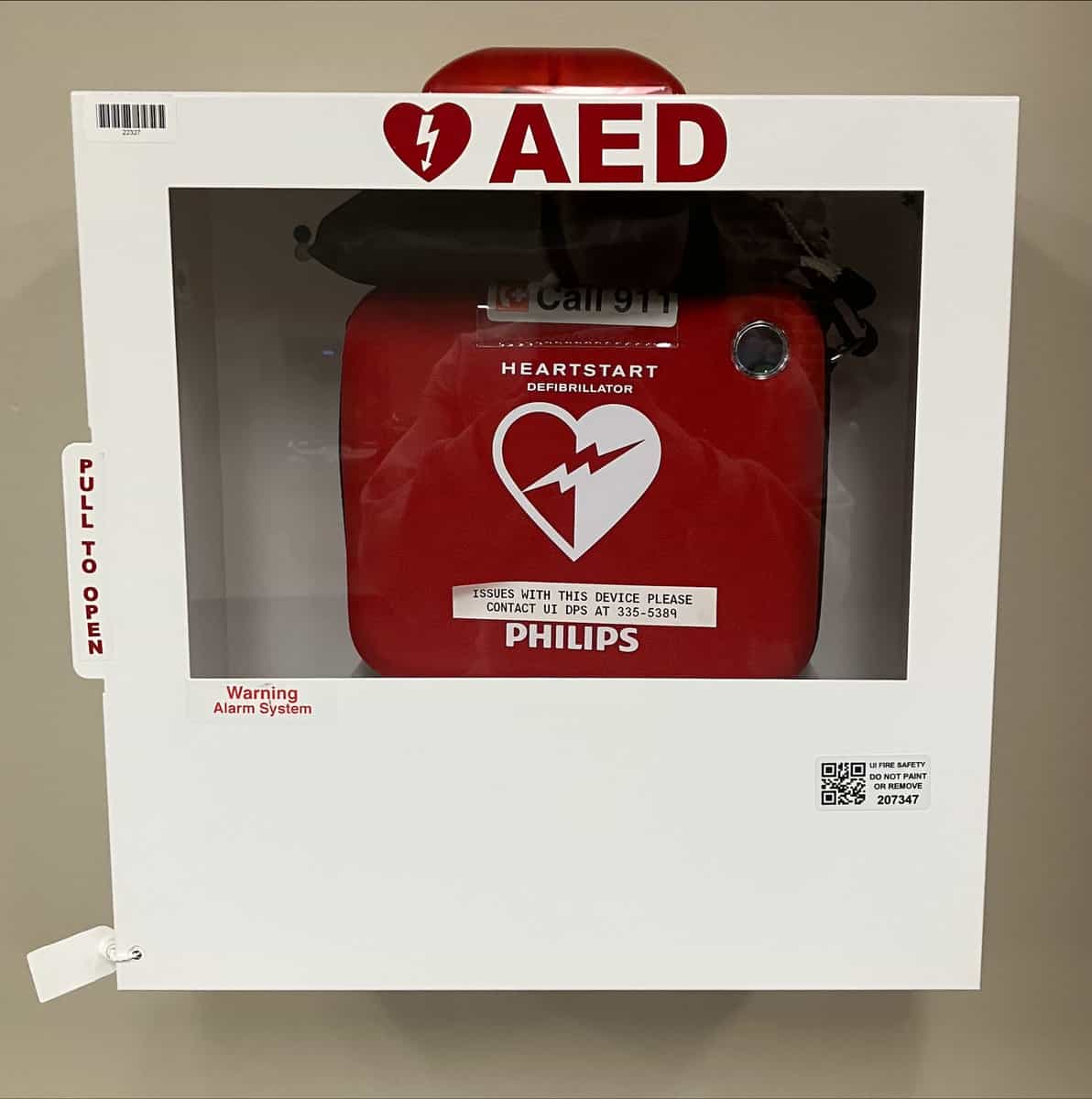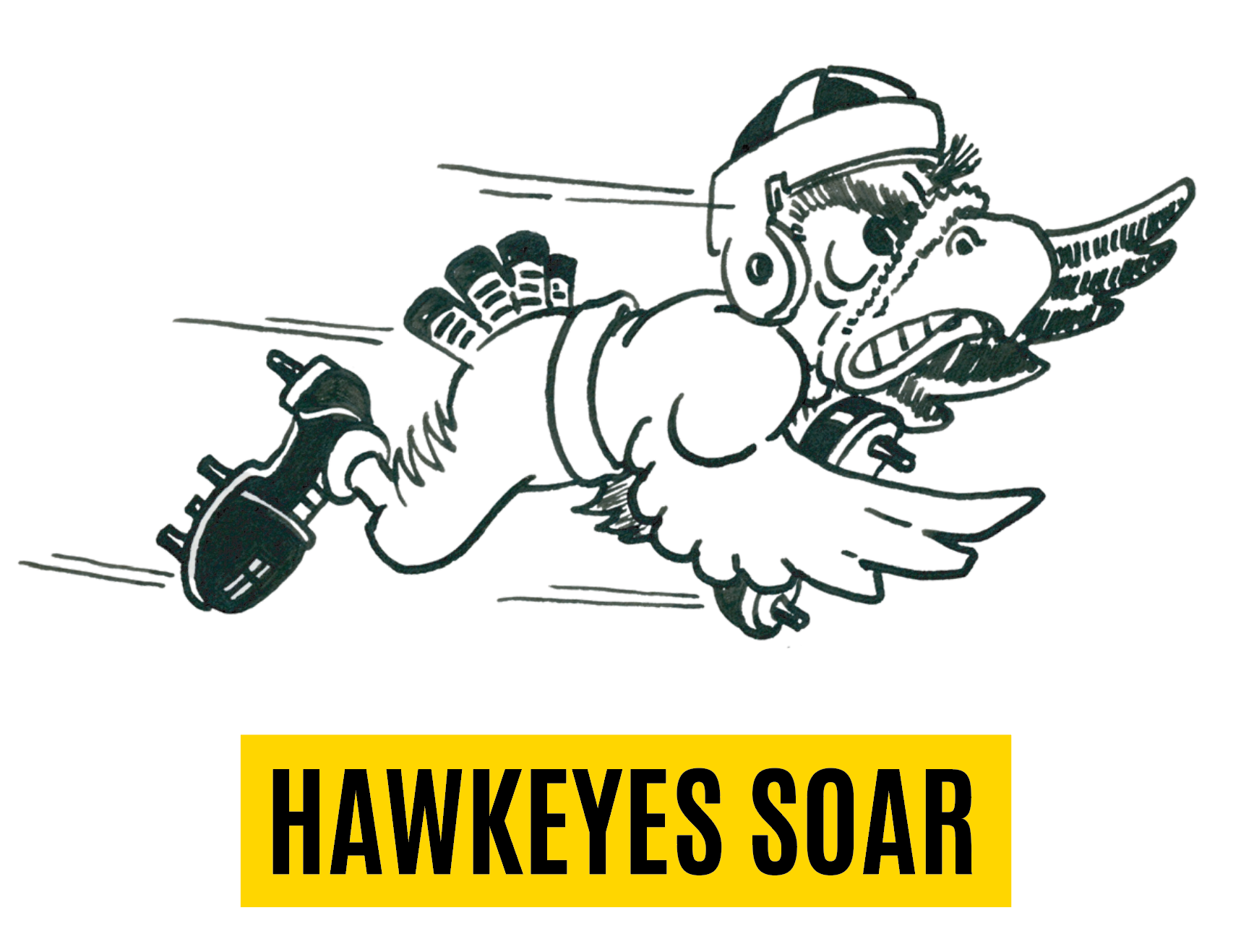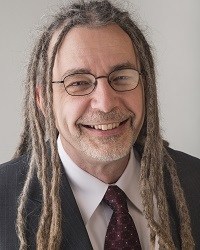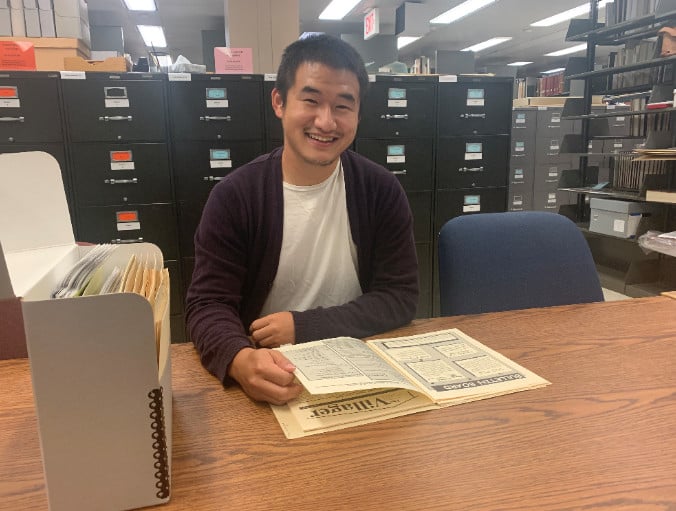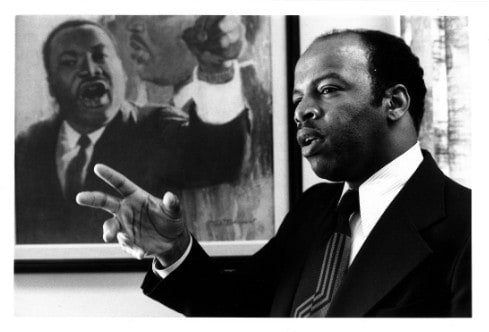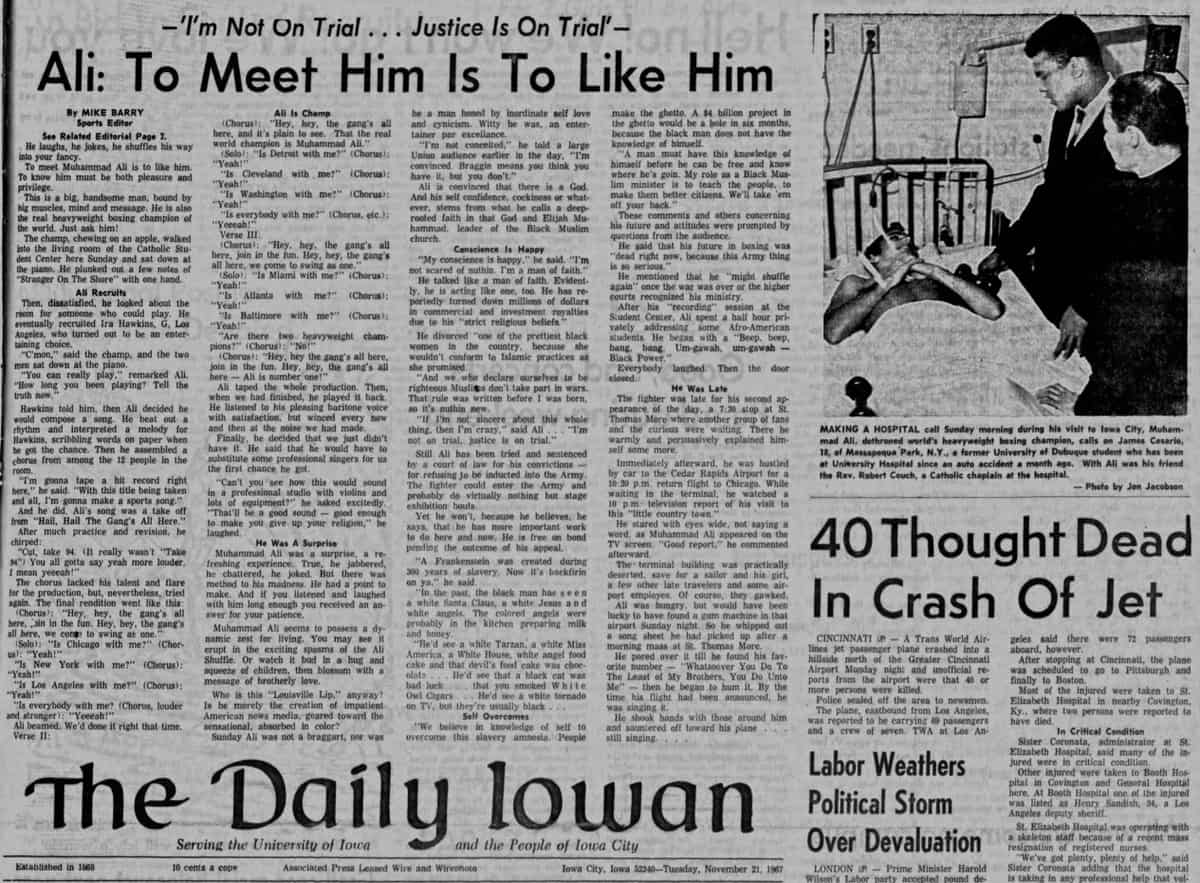We are pleased to welcome Rachel Poppen as our new collections archivist in Special Collections and Archives. Rachel joined the department in mid-July. Raised in Sibley, Iowa, Rachel received her Bachelor of Arts in English and Spanish from the University of Iowa. She then went on to receive her Master of Science in Information ScienceContinue reading “Welcome Rachel Poppen, new collections archivist”
Tag Archives: University archives
Welcome Matrice Young, new student life archivist
We are happy to welcome Matrice Young as our new student life archivist in Special Collections and Archives. Matrice joined the Libraries at the beginning of summer. Hailing from Chicago, Matrice received her BA in creative writing with minors in educational studies and Africana. She received her MA in Library and Information Science from UniversityContinue reading “Welcome Matrice Young, new student life archivist”
UIowa Hearts Richard Kerber
The following is written by graduate student and Special Collections student worker Emily Schartz To wrap up American Heart Health Month, we’re remembering University of Iowa professor, cardiologist, and researcher Richard Kerber (1939-2016). If you have noticed the white AED (Automated External Defibrillator) boxes around, you have seen Kerber’s long-lasting impact on our campus andContinue reading “UIowa Hearts Richard Kerber”
Welcome Sarah Keen, our new university archivist
We are pleased to welcome Sarah Keen as our new university archivist in Special Collections & Archives. Sarah joined the Libraries at the start of the fall semester. She comes to Iowa from upstate New York, where she served as Colgate University Libraries’ university archivist and head of Special Collections and University Archives. Previously, sheContinue reading “Welcome Sarah Keen, our new university archivist”
Introducing SOAR: A Project for Preserving the Legacy of Student Organizations on Campus
The following is written by Community and Student Life Archivist Aiden Bettine The University Archives is embarking on a new, hands-on project to collect the history of student organizations on our campus, Student Organizations Archiving their Records or SOAR. The Purpose of SOAR is to ensure that the legacy of each student organization on theContinue reading “Introducing SOAR: A Project for Preserving the Legacy of Student Organizations on Campus”
University Archivist David McCartney is ready for the next chapter
He’s served as the University of Iowa’s institutional memory for the last 21 years, which includes writing the beloved Old Gold series. Now, University Archivist David McCartney is starting a new chapter. McCartney, who is retiring on March 1, has been dedicated to ensuring access to Iowa’s history and also highlighting voices that are underrepresentedContinue reading “University Archivist David McCartney is ready for the next chapter”
University of Iowa Asian American Oral History Archive
The following is written by Asian Alumni and Student Oral History Project Intern Jin Chang Since the start of the pandemic, prominent leaders have stood in front of crowds of American people calling COVID-19 the “China Virus” and “Kung Flu.” As a result, Chinatown businesses closed as tourists continued to avoid Chinatowns across America and raciallyContinue reading “University of Iowa Asian American Oral History Archive”
John Lewis and Darwin Turner’s 1978 Summer Institute
The following comes from Archives Assistant Denise Anderson With the presidential election and Inauguration over, there has been a lot of talk about voting rights in the news. With Raphael Warnock’s win, Georgia’s first Black senator, we are reminded that the struggles and work of the Civil Rights Movement was not distant history. This coincidesContinue reading “John Lewis and Darwin Turner’s 1978 Summer Institute”
Aiden Bettine to join Special Collections and University Archives
The University of Iowa Libraries is pleased to announce that Aiden M. Bettine will join the Department of Special Collections and University Archives as Community and Student Life Archivist effective January 4, 2021, a newly-created position in the Libraries’ Residency Librarian Program*. Bettine established the Transgender Oral History Project of Iowa in 2018 and isContinue reading “Aiden Bettine to join Special Collections and University Archives”
Listening to Muhammad Ali, 53 years later
It’s been over fifty-three years since Muhammad Ali spoke to a full house in the Iowa Memorial Union on the University of Iowa campus, but thanks to the Darwin Turner Audio Collection (and a grant to digitize this collection), anyone today can take a moment to listen to Ali’s words and advice to Hawkeye studentsContinue reading “Listening to Muhammad Ali, 53 years later”
